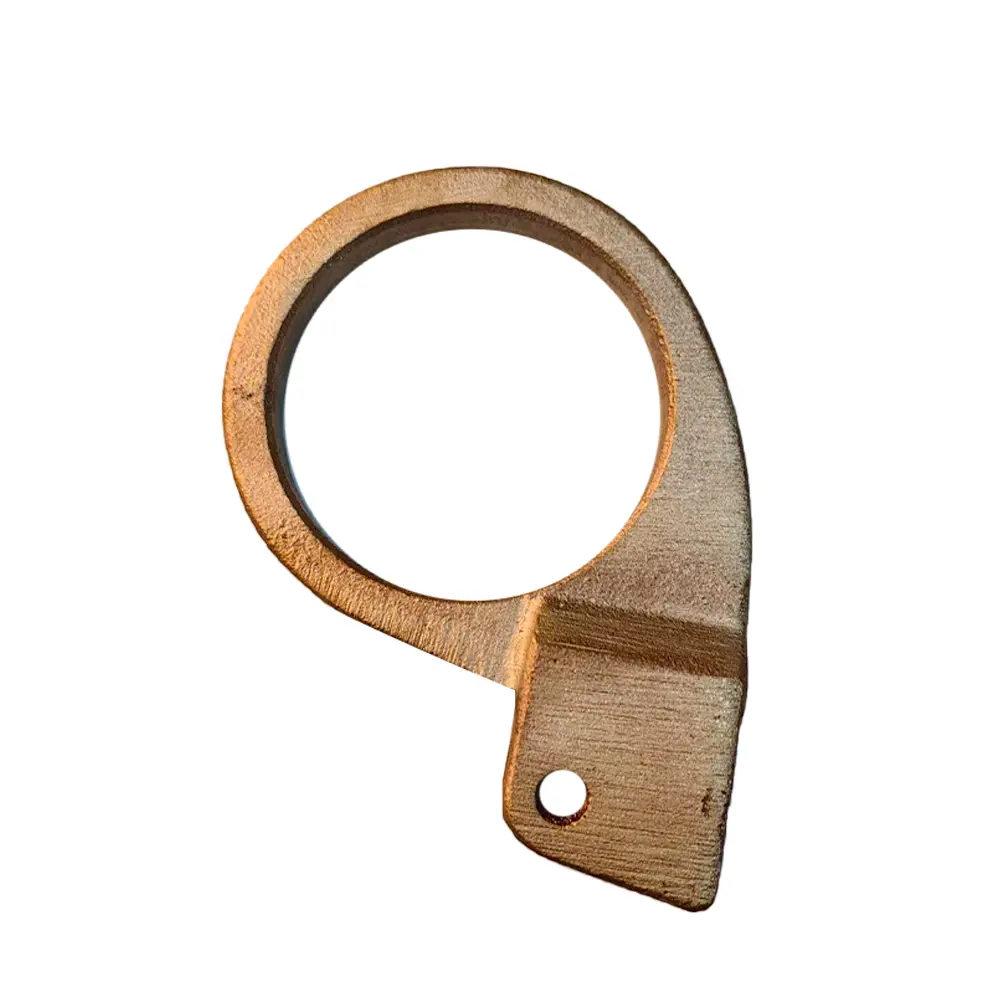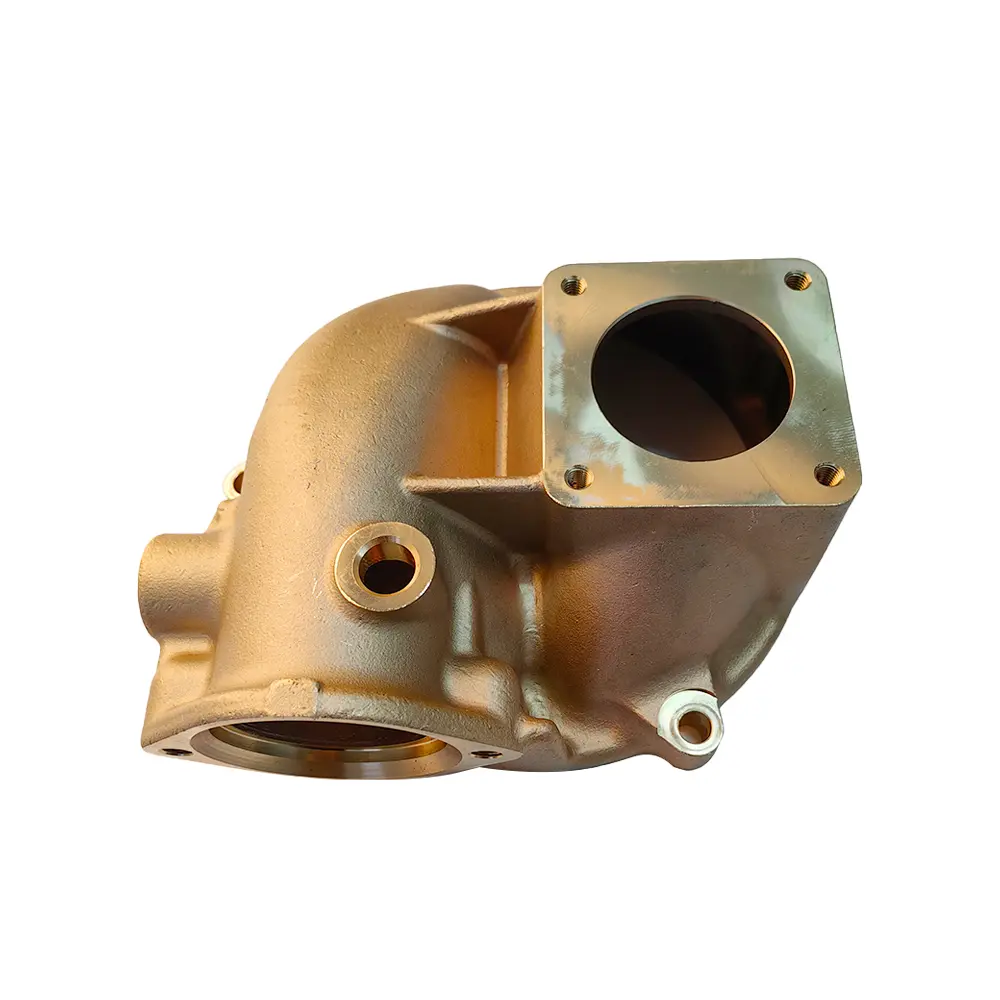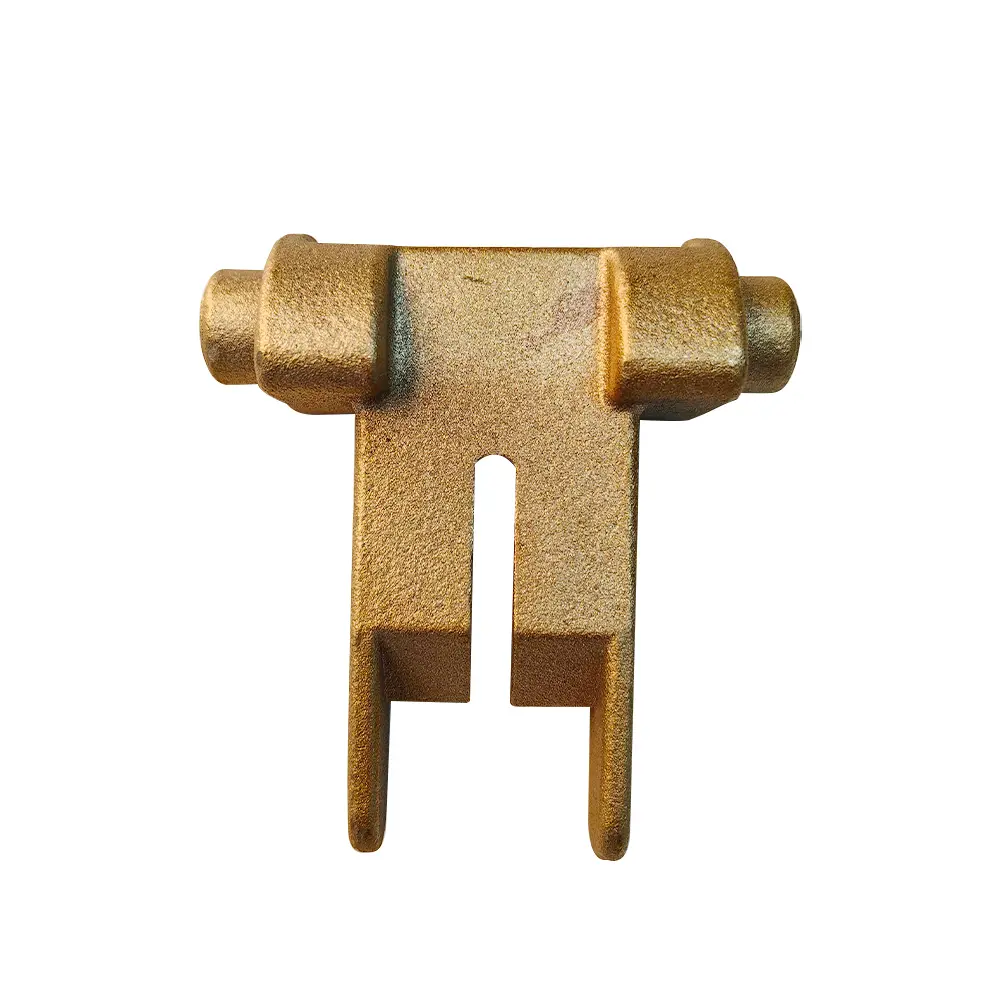Why Pull Ring-Brass Precision Casting Works Best

Pull ring-brass Precision Casting stands out as the perfect solution for electrical applications. You benefit from its unmatched conductivity, durability, and precision. The Pull Ring, made from Silicon Bronze, showcases these advantages with its exceptional mechanical strength and resistance to corrosion. This combination ensures that you receive components designed to perform reliably in demanding electrical systems. Whether you need efficiency or long-lasting quality, this casting method delivers results that meet your expectations.
Key Takeaways
- Pull ring-brass precision casting offers unmatched electrical conductivity, making it ideal for efficient energy transfer in electrical applications.
- The corrosion resistance of brass and Silicon Bronze ensures that components maintain their integrity and functionality even in harsh environments.
- This casting method allows for tight tolerances and consistent quality, reducing the risk of errors and ensuring reliable performance in critical applications.
- Pull ring-brass precision casting excels in creating complex and custom designs, providing flexibility to meet specific project requirements.
- It is a cost-effective solution that minimizes material waste and production time, making it suitable for both small and large production runs.
- Components produced through this method, such as connectors and switches, are designed to withstand mechanical stress and environmental factors, ensuring long-lasting durability.
- Choosing pull ring-brass precision casting guarantees high-quality parts that enhance the efficiency and reliability of modern electrical systems.
Material Properties of Brass and Silicon Bronze
High Electrical Conductivity
When you choose pull ring-brass precision casting, you ensure reliable performance in high-demand electrical applications.
Corrosion Resistance
Corrosion can compromise the longevity and functionality of electrical components. Brass and Silicon Bronze resist corrosion effectively, even in harsh environments. Brass forms a protective oxide layer that shields it from moisture and air. Silicon Bronze goes a step further by resisting not only moisture but also saltwater and industrial chemicals. This resistance ensures that your components maintain their integrity over time. Pull ring-brass precision casting leverages these materials to create durable parts that withstand challenging conditions.
Mechanical Strength and Machinability
Strength and machinability are crucial for creating components that endure mechanical stress while maintaining precision. Brass offers a balance of strength and flexibility, making it easy to machine into intricate designs. Silicon Bronze provides even greater mechanical strength, allowing it to handle higher loads without deforming. Both materials support tight tolerances, ensuring consistent quality in every part. With pull ring-brass precision casting, you benefit from components that combine robustness with precision, meeting the demands of modern electrical systems.
Advantages of Pull Ring-Brass Precision Casting

Tight Tolerances and Consistent Quality
You demand precision and reliability in every component.
Ability to Create Complex and Custom Designs
Modern electrical systems often require intricate and unique components. Pull ring-brass precision casting excels at producing complex and custom designs. The flexibility of this method allows you to create parts with detailed geometries that other manufacturing techniques cannot achieve. Whether you need intricate connectors or specialized pull rings, this process adapts to your specific requirements. The ability to customize designs ensures that your components fit seamlessly into your systems. With pull ring-brass precision casting, you can turn innovative ideas into high-quality, functional parts.
Cost-Effectiveness and Scalability
Cost-effective solution without compromising performance.
Application-Specific Benefits of Pull Ring-Brass Precision Casting

Electrical Connectors
Electrical connectors play a critical role in ensuring efficient energy transfer. You need connectors that maintain strong electrical conductivity and resist wear over time. Pull ring-brass precision casting provides the ideal solution for manufacturing these components. The process ensures tight tolerances, which are essential for creating connectors that fit securely and function reliably. The use of brass and Silicon Bronze enhances the durability and performance of these connectors, even in demanding environments. By choosing this method, you gain connectors that deliver consistent performance and withstand the challenges of modern electrical systems.
Switches and Terminals
Switches and terminals require precision and strength to handle frequent use and high electrical loads. Pull ring-brass precision casting excels in producing these components with the necessary mechanical strength and accuracy. You benefit from parts that maintain their integrity under stress while offering excellent electrical conductivity. The corrosion resistance of brass and Silicon Bronze ensures that switches and terminals remain functional, even in harsh conditions. This casting method allows you to create custom designs tailored to specific applications, ensuring that your electrical systems operate efficiently and reliably.
Pull Rings in Electrical Systems
Pull rings are vital components in electrical systems, providing support and functionality in various applications. You need pull rings that combine strength, precision, and resistance to environmental factors. Pull ring-brass precision casting delivers all these qualities. The process ensures that each pull ring meets exact specifications, offering consistent quality and performance. The use of Silicon Bronze enhances the pull ring's ability to resist corrosion and mechanical stress, making it suitable for industrial and outdoor environments. With this casting method, you receive pull rings that integrate seamlessly into your systems and contribute to their overall efficiency.
Comparison with Alternatives
Brass vs. Other Metals (e.g., Aluminum, Steel)
When selecting materials for electrical components, you must consider the unique properties of each option. Brass stands out compared to metals like aluminum and steel due to its superior combination of conductivity, strength, and corrosion resistance.
-
Electrical Conductivity: Brass offers excellent electrical conductivity, making it ideal for energy transfer. Aluminum, while lightweight, has lower conductivity and requires larger cross-sections to achieve similar performance. Steel, on the other hand, is not a good conductor, limiting its use in electrical applications.
-
Corrosion Resistance: Brass resists corrosion effectively, even in harsh environments. Aluminum forms an oxide layer that protects it but can degrade over time in certain conditions. Steel, unless treated or coated, is prone to rust, which compromises its durability.
-
Strength and Durability: Brass provides a balance of strength and flexibility, allowing it to withstand mechanical stress without breaking. Aluminum is softer and more prone to deformation under pressure. Steel is strong but lacks the machinability and precision that brass offers.
By choosing brass, you ensure that your components deliver reliable performance, even in demanding environments. Its unique properties make it a better choice for electrical systems compared to aluminum or steel.
Precision Casting vs. Other Manufacturing Methods
Precision casting offers distinct advantages over other manufacturing methods like machining, forging, or stamping. You gain benefits in terms of design flexibility, material efficiency, and production consistency.
-
Design Flexibility: Precision casting allows you to create complex shapes and intricate details that other methods cannot achieve. Machining and forging often struggle with intricate geometries, limiting your design possibilities.
-
Material Efficiency: Precision casting minimizes material waste by using only the amount needed to fill the mold. Machining, in contrast, removes material from a larger block, leading to significant waste. Forging and stamping also require excess material to accommodate shaping processes.
-
Consistency and Scalability: Precision casting ensures uniformity across all components, even in large production runs. Machining can introduce variations due to tool wear, while forging and stamping may struggle to maintain tight tolerances in high volumes.
Precision casting delivers components with superior quality and precision. It provides a cost-effective and scalable solution for producing parts that meet exact specifications. This method ensures that your components perform reliably, regardless of the complexity of the design.
Pull ring-brass precision casting offers you a unique combination of material excellence and advanced manufacturing techniques. The high conductivity of brass and Silicon Bronze ensures efficient energy transfer. Their corrosion resistance guarantees durability in challenging environments. This method allows you to create intricate designs with precision, meeting the demands of modern electrical systems. Whether you need connectors, switches, or pull rings, this Casting Process delivers reliable, high-quality components. By choosing this approach, you ensure your systems operate efficiently and withstand the test of time.
FAQ
What is pull ring-brass precision casting?
Pull ring-brass precision casting is a manufacturing process that uses brass or Silicon Bronze to create highly accurate and durable components.
Why is Silicon Bronze used in pull rings?
Silicon Bronze is chosen for its excellent combination of strength, corrosion resistance, and electrical conductivity. It withstands harsh environments, including exposure to moisture, saltwater, and industrial chemicals. This makes it ideal for pull rings, which require durability and reliability in demanding applications.
How does precision casting differ from other manufacturing methods?
Precision casting allows you to create intricate shapes and detailed designs that other methods, like machining or forging, cannot achieve. It minimizes material waste and ensures uniformity across all components. This process also supports scalability, making it suitable for both small and large production runs.
What are the main advantages of pull ring-brass precision casting?
The key benefits include:
- Tight tolerances: Ensures each component meets exact specifications.
- Durability: Brass and Silicon Bronze resist corrosion and mechanical stress.
- Design flexibility: Allows for the creation of complex and custom parts.
- Cost-effectiveness: Reduces material waste and production time.
Can pull ring-brass precision casting handle custom designs?
Yes, this process excels at producing custom designs. You can create components with intricate geometries tailored to your specific needs. Whether you need unique connectors, switches, or pull rings, precision casting adapts to your requirements.
Is brass better than aluminum or steel for electrical components?
Brass outperforms aluminum and steel in several ways:
- Conductivity: Brass offers higher electrical conductivity than aluminum or steel.
- Corrosion resistance: Brass resists rust and degradation better than steel and aluminum.
- Strength: Brass balances strength and machinability, making it more versatile.
These properties make brass a superior choice for electrical applications.
What industries benefit from pull ring-brass precision casting?
Industries such as electrical systems, machinery manufacturing, shipbuilding, power generation, and construction benefit from this process. The durability and precision of pull ring-brass components make them suitable for various demanding applications.
How does pull ring-brass precision casting ensure quality?
The process uses advanced techniques to control temperature, pouring speed, and pressure. These measures prevent defects like cracks or oxidation. Each component undergoes rigorous testing to ensure it meets high-quality standards.
Are pull rings suitable for outdoor applications?
Yes, pull rings made from Silicon Bronze are highly resistant to environmental factors. They withstand moisture, saltwater, and industrial chemicals, making them ideal for outdoor and industrial use.
How does pull ring-brass precision casting save costs?
This method reduces material waste by using only the required amount of metal to fill the mold. It also minimizes production time and ensures consistency, which lowers the risk of errors. These factors make it a cost-effective solution for manufacturing high-quality components.















